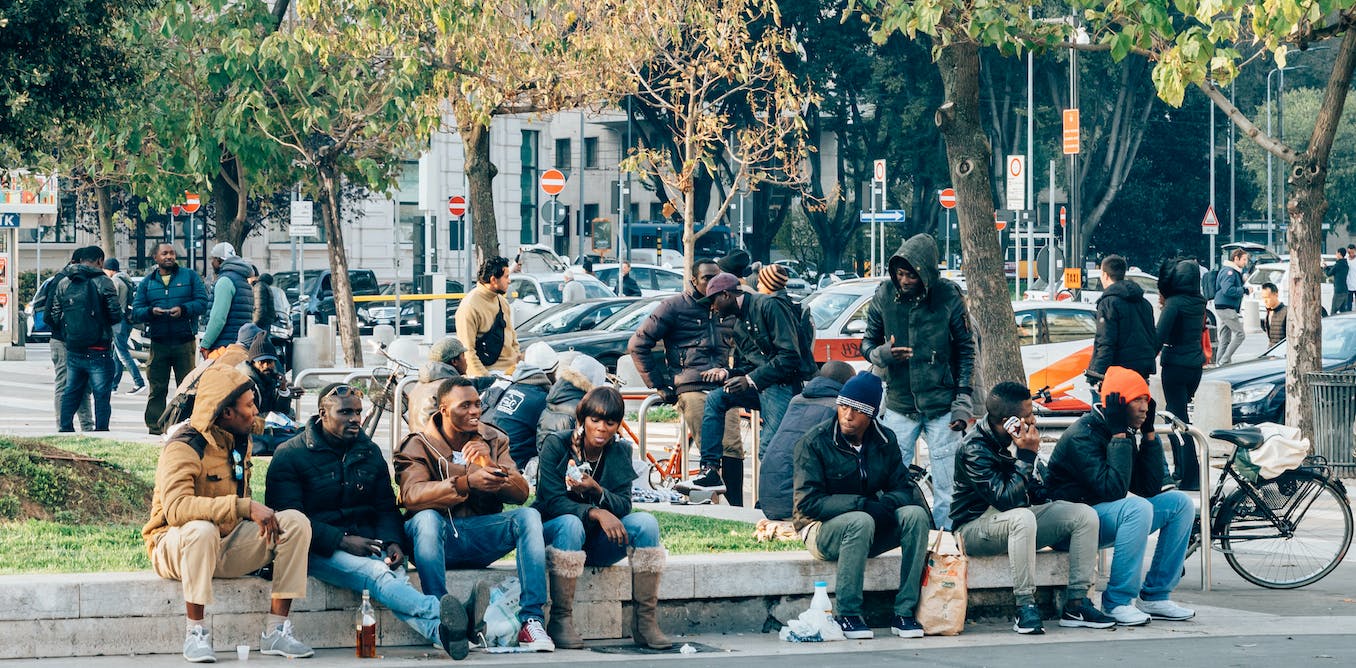Italy is in the grip of a housing crisis, and has been for years. It’s not as if the problem had gone unnoticed. There has been no shortage of articles in the national – or even international – media over students’ struggle to access affordable accommodation. Over the past days they have taken to pitching tents outside university buildings, as part of a growing protest movement against high rents. Begun by Ilaria Lamera, an engineering student at Milan Polytechnic who found it impossible to find a room under 600 euros, the demonstration has since spread to Milan, Rome, Florence, Bologna, Padua and Cagliari.
In Bologna, where I am writing from, rising student numbers and Airbnb rentals have snatched away the prospect of a home for many. But young adults are also grappling with another, less publicised issue: that of the ongoing racism toward those construed as ‘foreign’ or ‘other’. The phrase ‘no foreigners’ is a common refrain when looking for rental accommodation in Bologna. This racial discrimination is normalised by estate agents. It is presented as if it were a form of ‘eligibility’ criteria for landlords, like a requirement for an employment contract and references. As if it were totally normal and acceptable for landlords not to want to rent to ‘foreigners’, by which they mean those who are racialised, and not me, as a white British woman – also a ‘foreigner’. Sometimes, this is made even clearer. For example, a housing volunteer at a local charity assisting migrants was told by an estate agent: “Madam! You should have told me you were asking on behalf of an African! We don’t rent to Blacks here”, after she arrived at a flat viewing together with a young Black African man.
Launched in 2022 and funded by the Leverhulme Trust, my current research at the University of Bologna examines the longer-term fate of young men from West Africa who arrived in Italy as children seeking asylum, and hence are bureaucratically labelled as “unaccompanied minors”. While much ink has been spilled over the experiences of unaccompanied minors as children, less is known about what happens after they turn eighteen. Yet, it is at this moment that the rights they are accorded as children, including accommodation, may be lost. In my latest paper, drawing on my PhD research undertaken between 2017-2018, I analyse what happens after they become adults and must leave the reception centre that hosted them as children in a socio-political landscape that is increasingly anti-migrant.
This is based on ethnographic participant/observation in a reception centre for unaccompanied minors in Bologna while working as a volunteer keyworker for eight months between May 2017 and December 2018. In-depth and repeat interviews were conducted with 12 young African young men (six Gambians, four Nigerians, a Ghanaian and a Somalian), aged between 16 and 21. My current research involves a return to my fieldwork site after four years and involves interviews with five of the young men (2 Nigerians and 3 Gambians) to assess their longer-term outcomes as adults.
On the record
The local council has launched the SPAD-Anti-discrimination Help Centre to deal with racial discrimination, but this is in its infancy and under-reporting remains an issue. The first SPAD report documents reports of discrimination, and housing is found to be the second most prevalent area in which discrimination occurs. The young men in my study present a weary resignation to the continuing racism they face in the housing sector (and elsewhere).
Innocent*, who is now 22 and arrived in Italy as a twelve year old from Nigeria tells me he has been looking for a place to rent for months. Frequently, he is told by estate agents things such as ‘the owner is elderly, they don’t want any foreigners,’ or ‘They are afraid because you are Black’.
Innocent goes on to tell me he is regularly stopped for no reason by the police around the station when getting the train to work. They ask him for his residence permit. I ask him how this makes him feel.
‘Really upset’, he replies, ‘also because of the housing situation. Us Blacks, we’re nothing here’
Edrisa, a young Gambian who is now 22 came to Italy when he was sixteen, reflects on the difficulties of finding a place to live once outside the reception system. Playing on the Italian name for a residence permit (permesso di soggiorno, meaning a permit to stay), he tells me that many migrants, including him, have “a permit to stay but no place to stay [un permesso di soggiorno ma nessun posto di soggiorno], it doesn’t make sense. It is not right”. This seemingly contradictory situation, of migrants who are employed, paying taxes, and have the legal right to stay, but cannot find a house, is widespread.
Edrisa explains that despite having regular work on construction sites, as a qualified builder, he was homeless for nearly four months, crashing with friends, sometimes even sleeping in his work van.
“It is really difficult for a foreigner to find a house here, actually, not all foreigners but if you are Black… Italians don’t want to rent to Black migrants. It is so difficult.”
For Edrisa this is due to a combination of the housing crisis and the racism he faces as a young Black man in Italy. He maintains racism is due to the stereotyping of Africans as backwards and threat, compounded by the constant negative imagery of Black and Brown bodies arriving via sea. The public discourse on immigration in Italy is characterized by the stigmatization of racialised migrants who are framed as inferior and threat.
Beyond landlords, racism has long tainted Italy
Clearly, however, it is not feasible to suggest that racism merely pertains to landlords as an individual mentality or exception from the norm. Rather, we must dig deeper into the ongoing colonial legacies of racism that become visible in the act of renting. As the anthropologist Bruno Riccio observed over ten years ago, “culturalist” readings of difference have led to residential segregation and discrimination in the Italian housing market.This is starkly evident in the recent declaration by Italy’s Agriculture and Food Sovereignty Minister Francesco Lollobrigida that Italy’s low birth rate meant Italians are facing “ethnic replacement”. Italy’s Prime Minister, Giorgia Meloni, also a member of the far-right Brothers of Italy political party, has made similar remarks in the past. According to the OHCHR’s (2019) Report of mission to Italy on racial discrimination’, the worst years for racially motivated attacks were 2009 and 2018; both periods in which the public discourse was particularly anti-migrant. During the far-right Lega’s election campaign in 2017-18, racially motivated attacks in Italy tripled. The leader of the Lega, Matteo Salvini, is now a Minister in the coalition government.
The coalition government recently introduced a new immigration law, the Cutro Decree (decreto Cutro), named after the Calabrian town close to where at least 72 people died in a shipwreck in February this year. The new law is controversial and has received widespread criticism from human-rights organisations, concerned about the increased precarity and irregularity that would be created. Naming a law which brings in increasingly restrictive immigration practices after a shipwreck that some rights organisations argue resulted from the very same government’s harsher laws, together with wider EU policies, is deeply problematic. Whilst the law does not directly affect the young men in my study, its effects are pervasive and increase the ongoing hostility towards racialised migrants, just like previous immigration legislation brought in under a far right party. The divide between ‘us’ ((white) Italians) and ‘them’ (racialised migrants) keeps on widening.
In Bologna, like other gentrifying global cities in the Global North, the mobility of elites stand in stark contrast to those who are racialised, unable to access the city, which increasingly risks becoming a spectacle of elite privilege and tourist consumption. The local council recently launched a ‘Local Action Plan for an Anti-Racist and Intercultural City’, and has made attempts to regulate Airbnb; recognised as a challenging feat. However, for Bologna to become a city in which more than the porticoes are ‘open’ to young racialised migrants, what is really needed is a deeper conversation on racism in Italy, particularly as manifested at the political level.
*All names are pseudonyms



